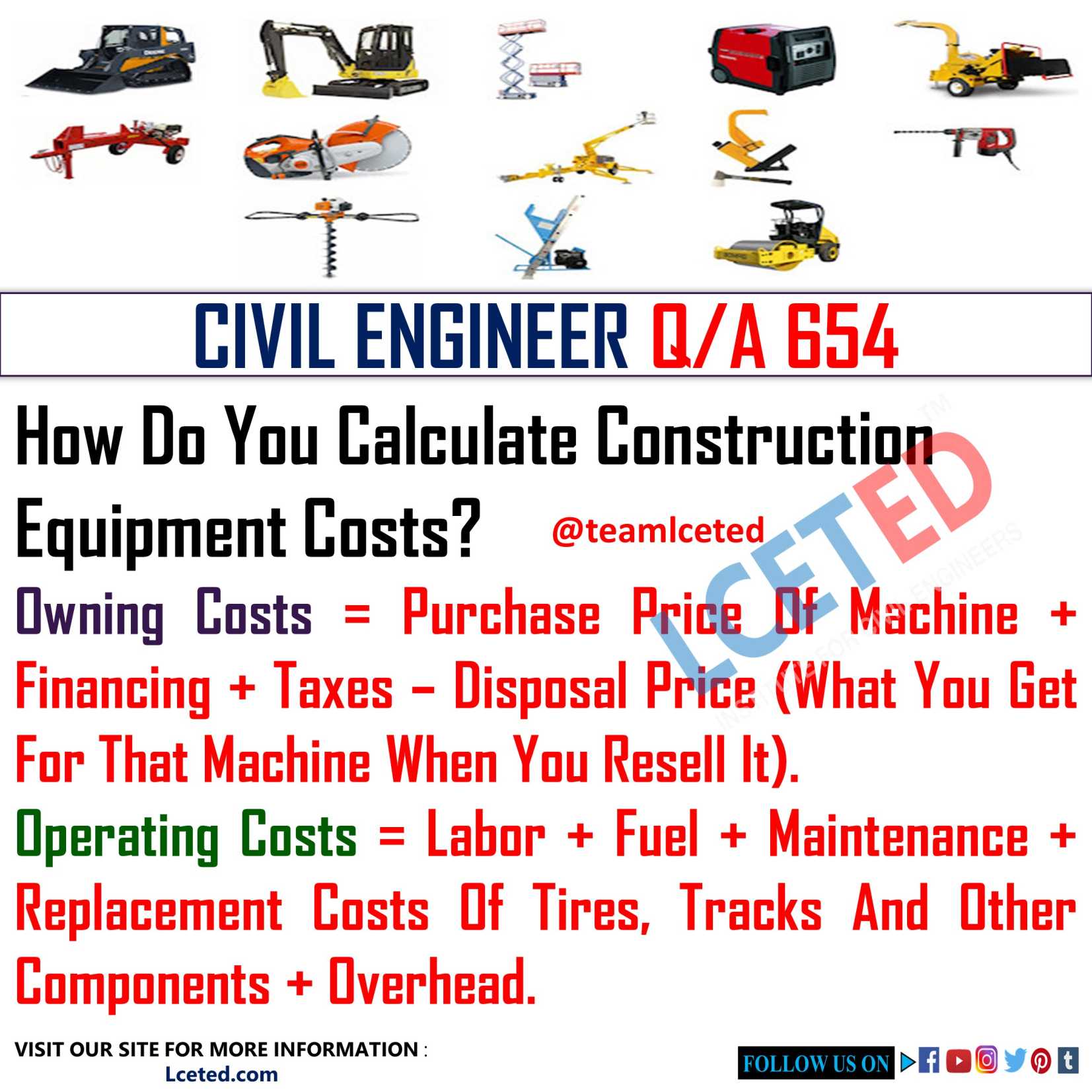COST OF CONSTRUCTION EQUIPMENT
How Do You Calculate Construction Equipment Costs?
PROCUREMENT COST
Procurement cost includes
(I) The Cost Price Of The
Equipment,
(II) Interest On Money
Invested On The Purchase,
(III) Taxes Paid And
(IV) Insurance Cost.
Evidently, the owner of the
equipment pays cash for the procurement of the equipment. It is to be noted
that if the same amount is invested in some other scheme what would be the
turnover. One should get a higher amount annually by investing in the
equipment. Each year the equipment earns for the owner and in the process, its
value gets depreciated. Thus the investment in the equipment is therefore
reduced by the amount of depreciation. A realistic rate of interest would be
the one based on the average value of the equipment during its useful life. The
average value of the equipment has to be determined.
On the depreciated value of
the equipment, the insurance and taxes are paid. The expenses also should be
worked out on the average value of the equipment. These aspects are to be
considered before investing in the procurement of equipment.
OPERATING COST
The operating cost of equipment is based on the following
factors:
(i) Cost of investment
(ii) Depreciation cost
(iii) Cost of major repair
(iv) Cost of fuel and lubricants
(v) Cost of labour
(vi) Servicing and field repairs
(vii) Overheads
1. Cost of Investment
By investment made on the
equipment the owner is losing an amount equal to the interest or return one
would have otherwise been received from banks or other sources of investment. For the
purpose of calculating the total cost of investment, the interest, the taxes,
insurance, etc., may be taken as 10–15% of the cost of equipment.
2. Depreciation Cost
Because of wear and tear, the cost of equipment gets depreciated. An amount of earning has to be set
aside, to balance the depreciation, so that the accumulated amount can be used
at the end. This amount is recovered from the earnings of the equipment and
forms a charge on the operating cost.
3. Cost of Major Repair
Major repairs are those
which are incurred when the equipment is taken to a workshop. This repair
involves the replacement of major parts of the equipment, overhauling and
servicing. This incurred expense is added to the capital cost so that the
expenditure is distributed over the years and included in the operating cost of
the machine.
4. Cost of Fuel and Lubricant
While calculating the fuel
consumption of the equipment, it is the general practice to consider the full
load condition and constant speed under favourable conditions. As the equipment
would not be working always at the ideal condition and so a reduction factor of
60% is considered.
5. Cost of Labour
The cost of labour includes
(i) the wages of the working crew and (ii) the wages of supervisory staff.
6. Servicing and Field Repair
All expenses involved in
the maintenance normally met during the operation of equipment except major
repairs are included under this. This demands periodical service of the
equipment.
7. Overhead
In a large project, the
whole establishment is work charged. Any unforeseen expenses which are not work
charged or non-productive are distributed to the various work producing
elements for purpose of cost control.
SOURCE: BUILDING CONSTRUCTION MATERIALS AND TECHNIQUES | P. PURUSHOTHAMA RAJ
If you find
This information is helpful, please share it.
Thanks! For reading the article...









No comments:
Post a Comment